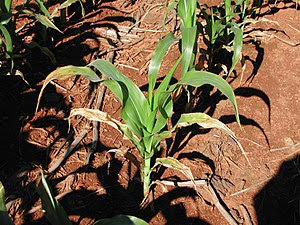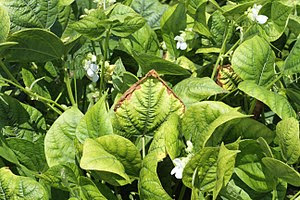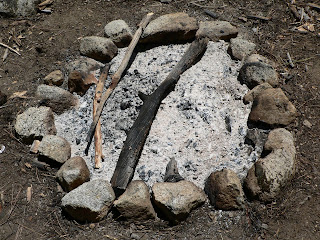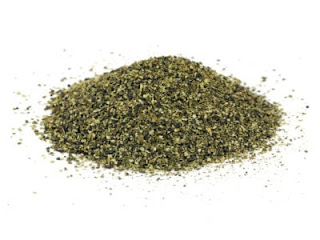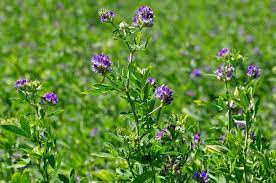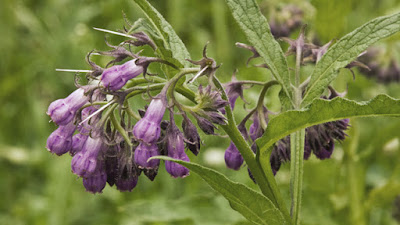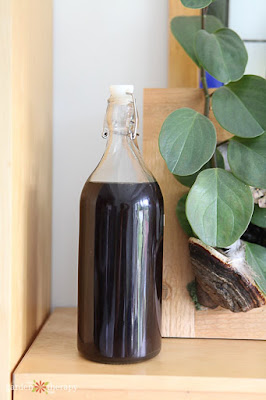Home gardening and more is an exclusive blog site for gardening and home decor, gardening ideas, gardening tips, gardening hacks and other related protips that you will not commonly find. These gardening tips, gardening ideas and gardening hacks are the ones that have been implemented and tested with proven results.
Labels
Wednesday, May 12, 2021
Do you notice these common signs in your plant - BE ALERT - Gardening tips and Gardening ideas.
Monday, May 10, 2021
5 extra nourishing homemade liquid fertilizers made with weeds in your garden - Gardening ideas for beginners.
Using homemade fertilizers for the garden has become an area of interest for almost every gardener. Gone are the days when we need to look upon the inorganic chemical fertilizers to keep our vegetable garden, indoor plants and other plants in our garden flourishing. These are also expensive. Let’s look into some easy to make liquid fertilizers. These fertilizers are made from certain plants in the garden and also from weeds which are generally considered as a hindrance to plant growth. Here are some gardening ideas on how to convert the useless weeds into nourishing homemade organic fertilizer. Gardening for beginners will also become easy with these homemade fertilizers.
We will look into a list of 5 liquid homemade fertilizers, which you wouldn’t have known. We will also look into the benefits of each liquid fertilizer and here is the list of overall benefits of using such homemade liquid fertilizers for your plants.
Benefits of weed fertilizer for plants:
Enhances the proteins synthesis in plants, thus making the plant build up its structure well
Prevents stunted plant growth and improves yield
Reduces pest and other plant infections
Increases root growth
Makes a strong cell wall, thus preventing plant damage
Enhances the productivity of plants
Increases foliage health
1. Alfalfa liquid fertilizer:
Alfalfa which is generally used as a livestock feed can also be used to feed your plants a nourishing food. Alfalfa is rich in potassium, folic acid, vitamin A, nitrogen, calcium and also contains other trace minerals. It is actually a weed that can be used to produce a nitrogen rich fertilizer tea for your plants.
Comfrey is actually a shrub that grows up to 5 feet tall, in the backyard. This is rich in magnesium, phosphorus, potassium, calcium, vitamins A, B and other trace minerals. Comfrey fertilizer can actually add that extra required dose of phosphorus and magnesium to your plants.
3. Willow liquid fertilizer:
These weeds contain high amounts of growth hormones and thus willow liquid fertilizer can be used to feed transplants and seedlings.
4. Horsetail liquid fertilizer:
Another important liquid fertilizer made from weeds is horsetail liquid fertilizer. This is actually rich in iron, silica and potassium. Iron and silica are generally not found in other weeds, because these horsetails grow deep rooted and thus draw up the nutrients in deep soil. Using this to make your fertilizer tea will actually boost the nutrients for your plants.
5. Stinging nettle liquid fertilizer:
One caution while handling stinging nettle is to wear gloves as these are itchy when they come in contact with skin. Otherwise, stinging nettle liquid fertilizer is an excellent natural insect repellent, and also resists fungal attacks. Stinging nettle when used as a fertilizer for your plants provides iron, zinc, selenium, boron and magnesium which are rarely found in other fertilizers. It is also a rich source of calcium, nitrogen, phosphorus and potassium.
How to make these fertilizers?
Sunday, May 9, 2021
Use this homemade liquid fertilizer as a rich source of nitrogen and potassium for your plants.
Be it gardening beginners or those who have been into gardening for quite a few years, all of us are constantly looking out for organic homemade fertilizers which can provide rich nutrients to the plants.
Various liquid fertilizers
This particular fertilizer that we are going to discuss today is quite different from the above ones and it can be easily made from one if the common plants that grows in your garden or backyard itself. But, this plant is considered a waste and commonly thrown away. It is also mostly considered as a hindrance to your other useful for growing vegetable plants or growing ornamental plants.
By this time you should have guessed it, yes it is nothing other than grass. Most of the time, almost in every garden and lawns we have these grasses growing out of control. We just trim of the grasses and throw it away.
What does the usage of grass do for your plants in the garden?
Ok, now before we move onto the actual process of how to make liquid fertilizer using grass, let's see what component in grass actually contributes to this better growth of your plants.
What nutrient does grass have which acts as a fertilizer for plants?
Grass is very high in nitrogen content and this component is the one that actually makes up the plant DNA and chlorophyll, which is necessary for making its own food.
Apart from this, the grass liquid fertilizer is also rich in potassium and this is the component that plays multiple roles in plant growth. Potassium helps in help in
2. Increase root growth
3. Reduce wilting
4. Increases photosynthesis
5. Enhances the protein content in plants
6. Decreases or slows down crop diseases
Video on 11 organic fertilizers that you wouldn't have known
How to make grass liquid fertilizer for your garden?
Having so many benefits for your garden, now it is high time to see how to make this grass liquid fertilizer or grass garden tea for your plants.
Step 1. Every time you cut down your grass from your lawn or your backyard, just collect them in a bucket.
Step 2. Once you have half a bucket of these grass cuttings add water in the bucket till it covers the grass surface.
Saturday, May 8, 2021
5 must know Gardening Hacks and Gardening Ideas - Gardening for Beginners
Gardening is an evergreen hobby for almost everyone. More and more youngsters are getting interested in gardening, and organic gardening has taken up a new place in the hearts of people. If you are here reading this blog, then definitely you are also one among them looking for some easy gardening hacks or gardening ideas that can help you grow as a successful gardener. If you are looking for some kind of content related to gardening for beginners, then go ahead and read till the end.
Gardening hack number 1: News papers can help you get rid of the number one gardening enemy - the weeds.
If you are a gardening beginner, then definitely weeds will be one of the most common gardening problems that you will face. Ofcourse, these are still a hectic problem for those who have been gardening for years together. Here is a simple but highly effective hack that will help you get rid of the weeds in your garden bed.
Just take a thick layer of newspaper and spread it around your plants just leaving the area of the plants that you have planted. Water it well so that it will not fly away. The thick layer of newspaper will not allow the seeds of the weeds to sprout and grow.
Other alternatives: Instead of a news paper you can use rice sacks and to add some weight on the rice sacks to stop it from flying. You can just add some sand or gravel on top of it.


Gardening hack number 2: Ants and vaseline, what's the link?
Ants are the next biggest problem in the garden or It might even be inside your house. Vaseline can help you get rid of ants, wondering how? Just dab some vaseline in the ant hole openings, ant’s pathways and places where they hide. Ants and other such insects do not move on the sticky layer.
Gardening hack number 3: See what baby powders can do for your plants.
If you have been into gardening for quite longer, you would have definitely known that Japanese beetles are one among the troubles for your flower and vegetable garden. These can be avoided by just sprinkling some baby powder on the plant leaves. This will keep them away at least till the powder is washed off.
Gardening idea number 4: Do cats usually tend to spoil your herb garden?
Small herb gardens in your kitchen window sill or in your backyard are the most common place of visit for your cats and these easily tend to mess up your herb garden. To prevent cats, just place some forks around the herb plants just as shown in the picture below.
Gardening idea number 5: Plan out for companion gardening.
There are certain plants that thrive well when planted close to other plants and there are certain plants that thrive well only when planted alone. For instance, tomatoes, the most commonly grown vegetable at home, tends to thrive well and produce more when planted together with basil. Other companion plants for tomatoes are spinach, carrots, lettuce, onion etc. Here are the enemies for tomatoes and they are, cabbage,potatoes, beets, rosemary etc.
Related Posts
-
Baking soda, the commonly available kitchen ingredient can be used for your plants and garden in multiple of ways due to its immense benefit...
-
Caring for tomatoes throughout the growing season is highly essential and following these tips will help you maximise the harvest while min...
-
Grow bags made of fabric are becoming more nad more popular. When compared to the regular Terracotta plant pots and the plastic planters the...
-
When it comes to growing tomatoes successfully, one major problem that we face is a good plant with lots of lush foliage, and flowers, but ...
-
Creating a beautiful garden is a great passion for almost everyone. Gardening tips and gardening ideas for home are always sought out inorde...
-
Plant nutrients and it's importance: Plants, just like us need nutrients and having great interest in gardening, we would have definite...
-
Propagating plants at home from the mother plant is highly useful to make more genetically identical plants that resemble the parent and is ...
-
Most of the times we tend to pull out the seedlings that grow along with the weeds. This is what I did to my little lettuces that was growin...
-
Gardening is an evergreen hobby for almost everyone. More and more youngsters are getting interested in gardening, and organic gardening ha...
-
Garden ideas for home: Most of us who live in apartments love to have a garden, but space constraint is one of the major blocks that makes i...

